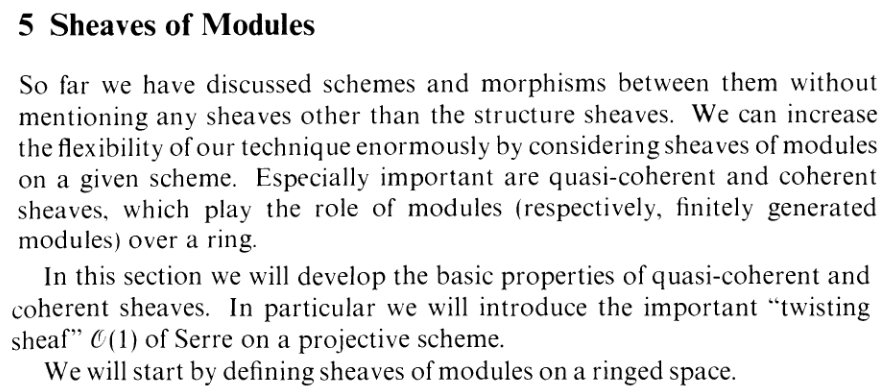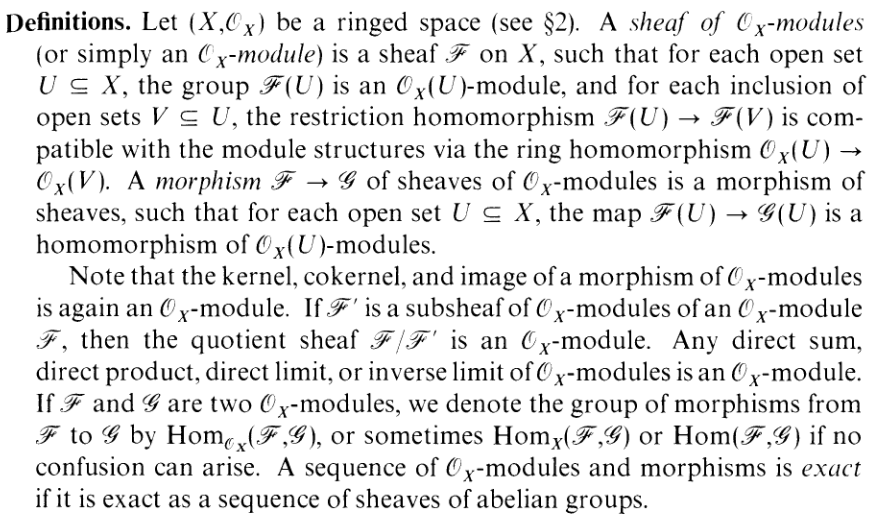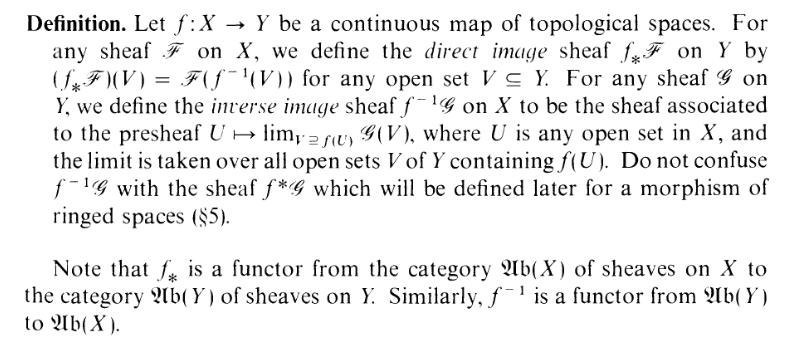II.5.1
5/27/2022

SOLDIERS: Youve slaved away at this siege for a nontrivial length of time. Youve
no clothes, no food, no ammo. Your heads are stuck in the trenches of
fundamentals, the mire of coastal artillery. Youve been stuck under a poor show of
leadership. Youre underappreciated, scolded for things that arent your fault. They
billet back in Ol’ Oll, while you’re holding down the redoubts, pitting your
flimsy batteries against red-and-gold naval first-rates in exhausting 7hour
gunduels. And they still have the audacity to come upon you and scold
you, and nitpick at you, and ask you to ”stop complaining.” Hah! They
give you orders without direction. Sans culottes sans fire. Never felt the
whizz of roundshot, the WHACK of grapeshot. Theyve given you no path
for success, no progress. And they still have the audacity to talk down
at you, to get angry at you for the stalling of this siege. No guidance.
Explanations without tests. They hold back the details then blame you for
the devil. The man ranked above us isn’t one cut above us, distant yet
present. He is secluded from your circmustances, living almost in another
world like an alien. They call you incompetent for not knowing how to do
simple things, when no one had ever taught you. They provide no overall
trajectory to hold you against, just daily tasks they can moodily spit on you
over. They think morale should just generate itself. They think you’re
fickle when you’re just stuck. Out of sleep—out of fear—out of whack.
Christ, I’ve been dreaming about reloading cannons. Sometimes I’m doing
nothing and I notice my hands going through the motions. I’ve had enough
artillery for a lifetime. I’m sure yall have too. My mind is so full of artillery
formations and information I’m going insane. I understand: If this led
anywhere, you’d be all in, but we aren’t being led–we’re being held. Siege
or no siege, that’s the truth of life for most people. When life goes day
by day, moment by moment, as if there were no larger strategy to the
whole affair—it is that philosophical focus on tactics which kills morale.
Just live in the moment! OooOOoo ← and then you’re dead. Not very
convincing, is it? Come on now. Do you fear death? People say things like
”Death is merely nonexistence–the absence of existence” then run like
pussies when they’re in actual danger. Focus, boys. What are you truly
hungry for? In the worst case, you’re at least smart enough to fake it.
Yes, I’ve sermoned on how mere nominalization blows an object up in
importance, regardless of its substantive qualities. Names are weapons. The
pen and sword go hand in hand. And Clausewitzian continuity applies
here: If you don’t use it, you lose it. Parisians forgot how fire #86 was.
SOLDIERS: You are cleverer than they think. You aren’t educated in the
traditional sense. Some of yall can’t even read. But you’ve demonstrated the
ability to unspike a cannon. Some of you’ve mastered the dangerous art of
mortars. You can all banter under fire. You will listen as long as you have
direction. And you’ve been listening. Despite how the higherups like to assume the
heart and soul of strategy doesn’t trickle down, you’ve been squeezing every drop
of information you can get, rather than idling by your battery in downtime.
You’ve hounded me for what I know: who’s doing what, who said this, what’s the
newest dumbass plan they came up with. Against all odds, you’re not in the dark.
You’ve shined light on yourselves. And yes, you’ve been watching. I concretely
demonstrated my theoretical sermons on naming. You watched it go:
OF THE MOUNTAIN; BREECHLESS BRIGADIERS; SABLETTES;
BREGAURT; QUATRE MOULINS–how men flocked to their favorite names.
And you’ve followed suit: You heard about the jutting into the Rade of the
Eguillette, how mastering it means mastering the harbor, and you’ve correctly
given it a cute nickname. It worked. But it fades in the confusion, the
indecisiveness of our superiors–the effect wanes day by day, week by week. Sans
clothes, sans good, sans ammo. Trees of cannons hidden underneath a
mire. Where is this red coastal forest pointed to admist our quagtrees?
If you don’t use it, you lose it. Bring your attention back to that jut.
Every battery serves as either a feint to distract the enemy from that jut,
or a direct assault on that point. Everything comes back to that jut.
Memorize that into your gut. And thus, here’s another cute name for yall.

5

And we are at the final stretch of fundamentals. According to Schoolmaster
Hartshorne, this is the last of the sections in this chapter establishing
”grounding.” Yall are tired. Our wings begging to be bared. Our dicks are hard.
What wondrous adventures lies beyond this hurdle is up to the imagination. But
we have some more foundation to construct–some foundation that gives us a taste
of freedom. You thought structure sheaves brought freedom? What about sheaves
over structure sheaves?

The zoo of sheaves is back to adorn our zoo of schemes. We’re getting into the
hardcore ”fundamentals” now. If you wanna spread your wings, you have to shed
fear. Donut be scared. I’m right here with you, holding your hand. So when I
screw up, so will you. Ha ha ha ha ha.
5.1

A (locally) free sheaf of modules is defined somewhat naturally:

As is the construction that goes by ”sheaf Hom”:

The point of this exercise is that locally free sheaves act nicely.
A

HAHAHAHAHAHAHAHAHAHAHAHAHAHAHAHAHAHAHAHAHAHAHAHAHAHAHAHAHAHAHA
HAHAHAHAHAHAHAHAHAHAHAHAHAHAHAHAHAHAHAHAHAHAHAHAHAHAHAHAHAHAHA
HAHAHAHAHAHAHAHAHAHAHAHAHAHAHAHAHAHAHAHAHAHAHAHAHAHAHAHAHAHAHA
HAHAHAHAHAHAHAHAHAHAHAHAHAHAHAHAHAHAHAHAHAHAHAHAHAHAHAHAHAHAHA
HAHAHAHAHAHAHAHAHAHAHAHAHAHAHAHAHAHAHAHAHAHAHAHAHAHAHAHAHAHAHA
HAHAHAHAHAHAHAHAHAHAHAHAHAHAHAHAHAHAHAHAHAHAHAHAHAHAHAHAHAHAHA
HAHAHAHAHAHAHAHAHAHAHAHAHAHAHAHAHAHAHAHAHAHAHAHAHAHAHAHAHAHAHA
HAHAHAHAHAHAHAHAHAHAHAHAHAHAHAHAHAHAHAHAHAHAHAHAHAHAHAHAHAHAHA
HAHAHAHAHAHAHAHAHAHAHAHAHAHAHAHAHAHAHAHAHAHAHAHAHAHAHAHAHAHAHA
HAHAHAHAHAHAHAHAHAHAHAHAHAHAHAHAHAHAHAHAHAHAHAHAHAHAHAHAHAHAHA
HAHAHAHAHAHAHAHAHAHAHAHAHAHAHAHAHAHAHAHAHAHAHAHAHAHAHAHAHAHAHA
HAHAHAHAHAHAHAHAHAHAHAHAHAHAHAHAHAHAHAHAHAHAHAHAHAHAHAHAHAHAHA
HAHAHAHAHAHAHAHAHAHAHAHAHAHAHAHAHAHAHAHAHAHAHAHAHAHAHAHAHAHAHA
HAHAHAHAHAHAHAHAHAHAHAHAHAHAHAHAHAHAHAHAHAHAHAHAHAHAHAHAHAHAHA
HAHAHAHAHAHAHAHAHAHAHAHAHAHAHAHAHAHAHAHAHAHAHAHAHAHAHAHAHAHAHA
HAHAHAHAHAHAHAHAHAHAHAHAHAHAHAHAHAHAHAHAHAHAHAHAHAHAHAHAHAHAHA
HAHAHAHAHAHAHAHAHAHAHAHAHAHAHAHAHAHAHAHAHAHAHAHAHAHAHAHAHAHAHA
HAHAHAHAHAHAHAHAHAHAHAHAHAHAHAHAHAHAHAHAHAHAHAHAHAHAHAHAHAHAHA
HAHAHAHAHAHAHAHAHAHAHAHAHAHAHAHAHAHAHAHAHAHAHAHAHAHAHAHAHAHAHA
HAHAHAHAHAHAHAHAHAHAHAHAHAHAHAHAHAHAHAHAHAHAHAHAHAHAHAHAHAHAHA
HAHAHAHAHAHAHAHAHAHAHAHAHAHAHAHAHAHAHAHAHAHAHAHAHAHAHAHAHAHAHA
HAHAHAHAHAHAHAHAHAHAHAHAHAHAHAHAHAHAHAHAHAHAHAHAHAHAHAHAHAHAHA
HAHAHAHAHAHAHAHAHAHAHAHAHAHAHAHAHAHAHAHAHAHAHAHAHAHAHAHAHAHAHA
HAHAHAHAHAHAHAHAHAHAHAHAHAHAHAHAHAHAHAHAHAHAHAHAHAHAHAHAHAHAHA
HAHAHAHAHAHAHAHAHAHAHAHAHAHAHAHAHAHAHAHAHAHAHAHAHAHAHAHAHAHAHA
HAHAHAHAHAHAHAHAHAHAHAHAHAHAHAHAHAHAHAHAHAHAHAHAHAHAHAHAHAHAHA
HAHAHAHAHAHAHAHAHAHAHAHAHAHAHAHAHAHAHAHAHAHAHAHAHAHAHAHAHAHAHA
HAHAHAHAHAHAHAHAHAHAHAHAHAHAHAHAHAHAHAHAHAHAHAHAHAHAHAHAHAHAHA
HAHAHAHAHAHAHAHAHAHAHAHAHAHAHAHAHAHAHAHAHAHAHAHAHAHAHAHAHAHAHA
HAHAHAHAHAHAHAHAHAHAHAHAHAHAHAHAHAHAHAHAHAHAHAHAHAHAHAHAHAHAHA
HAHAHAHAHAHAHAHAHAHAHAHAHAHAHAHAHAHAHAHAHAHAHAHAHAHAHAHAHAHAHA
HAHAHAHAHAHAHAHAHAHAHAHAHAHAHAHAHAHAHAHAHAHAHAHAHAHAHAHAHAHAHA
When I screw up, so will you. So hold on tight. We want to show this:
 |
Now, watch this. Let U be an open that makes ℰ free over 𝒪X. By that I mean,
 | (1) |
For some fixed finite n that doesn’t depend on U (since it’s fixed rank). Hence for
the purposes of this exercise, I’ll just write
 |
for simplicity, with the understanding that there’s a fixed finite number of copies
in the direct sum.
Before we go ahead and evaluate the dual of the dual ((ℰ)ˇ )ˇ, let’s just evaluate
the plain old dual (ℰ)ˇ. In which case,
| (ℰ)ˇ | = ℋom 𝒪X(ℰ,𝒪X) | |||||
 (ℰ)ˇ(U) (ℰ)ˇ(U) | = ℋom 𝒪X(ℰ,𝒪X)(U) | |||||
| = Hom𝒪X|U(ℰ|U,𝒪X|U) | ||||||
| = Hom𝒪X|U(⊕ 𝒪X|U,𝒪X|U) | (by (1)) |
Just think about this last expression. Let’s say f ∈ (ℰ)ˇ(U), so that
 |
is a morphism of sheaves of modules over 𝒪X|U. In that case, given open
W ⊂ U, we have
| f(W) : ⊕ 𝒪X|U(W) | →𝒪X|U(W) | (2) |
| i.e. f(W) : ⊕ 𝒪X(W) | →𝒪X(W) | (3) |
| (4) |
Now, let’s just think about this situation philosophically, shall we?
0.0.1 Lemma
Let M be an R-module. Then
 |
By the way, I’ll also start using the notation Rn = ⊕
i=1nR for the finite direct
sum.
Proof
Let r = (r1,…,rn) ∈ Rn, let e1 = (1, 0, 0,…0), and e2 = (0, 1, 0,…, 0),
etc.). Then
| r | = (r1,…rn) | ||
= (r1, 0, 0,…, 0) + (0,r2, 0,…, 0) +
 + (0, 0, 0,…,rn) + (0, 0, 0,…,rn) | |||
= r1(1, 0, 0,…, 0) + r2(0, 1, 0,…, 0) +
 + rn(0, 0, 0,…, 1) + rn(0, 0, 0,…, 1) | |||
= r1e1 + r2e3 +
 rnen rnen |
Let f : ⊕
i=1nR → M. Then
| f(r) | = f(r1e1 +
 + rnen) + rnen) | ||
= f(r1e1) +
 + f(rnen) + f(rnen) | |||
= r1f(e1) +
 + rnf(en) + rnf(en) | |||
Which means that f is fully determined by where it sends the ”standard
basis elements” e1,…,en to M. I.e. f effectively selects n elements from
M that can be linearly combined over R. I.e. f is just an element of⊕
i=1nM
QED
Now, what does this entail? When we selected f ∈ Hom𝒪X|U(⊕
𝒪X|U,𝒪X|U), and
grabbed its sections over W, (3) tells us that f(W) ∈ Hom𝒪X(W)(⊕
𝒪X(W),𝒪X(W))
which according to the lemma, simply means that
 |
So given W open in U, f selects n basis elements from 𝒪XW.
But I can do even better. f is a morphism of sheaves, so it has to be consistent
along restrictions:
The map on the left sends basis elements to basis elements. Hence, f(W) is
completely determined by the map of global sections f(U). So i can ignoreall the
nonglobal sections and just write
 |
But ⊕
𝒪X(U) ≃ℰ(U), and f was an arbitrary element of (ℰ)ˇ(U), so
(ℰ)ˇ(U) ≃ℰ(U). And therefore....
 | (5) |
.......
WHAT!?
0.1 Two Levers

OUT OF FEAR, HE SAYS. Peur. I, poor soul, followed the exact same path as
this poor fool, and look where it led me. The fearful all fall into the same hole.
THE FOLLY OF FEAR MAKES US FALL. I, like this fellow (And I
like this fellow, indeed), was following the example of many algebraic
geometers who put glueing aside as a trivial task. But we have to be
more careful, because this guy who calls himself ”Evariste” is wrong.

Yeah... I should add to my sermons that naming should be done with restraint.
Don’t be too quick to name yourself after a genius mathematician. In
any case, like ”Evariste,” I presumed that, after creating (iso)morphisms
gU : ℰ(U) → (ℰ)ˇ(U), on an open cover of X, that would glue to an
(iso)morphism ℰ→ (ℰ)ˇ. This is, of course, an incorrect assumption: Morphisms
of local sections do not always glue into a morphism of sheaves. To really see the
issue, let’s try defining a morphism ϕ : ℰ→ (ℰ)ˇ, which means, in general, we’d
need, for an arbitrary open set U,
| ϕ(U) : ℰ(U) | →ℋom(ℰ,𝒪X)(U) | ||
| i.e.ϕ(U) : ℰ(U) | →ℋom(ℰ|U,𝒪X|U) |
So, given s ∈ℰ(U), I need to send it to a morphism
| f : ℰ|U | →𝒪X|U | ||
| f(W) : ℰ(W) | →𝒪X(W) |
Is there any obvious way to do this in general? No. It’s only when ℰ(W) happens
to be a free module over 𝒪X(W) that a natural definition arises. But there are
many more open sets in X and the ”natural” definitions on the free W’s don’t
necessarily glue together correctly on those sets. (5) is wrong in general.
A: Attempt 2

SOMETIMES LOOOOVE COMES AROUND, AND IT KNOCKS YOU DOWN.
JUST GET BACK UP WHEN IT KNOCKS YOU DOWN. Let’s give this
another shot. Again, our goal is to show
 |
And the approach we’re going to take is to construct a morphism
| ϕ : ℰ | → ((ℰ)ˇ )ˇ | ||
| i.e.ϕ : ℰ | →ℋom𝒪X((ℰ)ˇ ,𝒪 X) | ||
| i.e.ϕ : ℰ | →ℋom𝒪X(ℋom𝒪X(ℰ,𝒪X),𝒪X) |
So, for any open set U, we need to define
| ϕ(U) : ℰ(U) | →ℋom𝒪X(ℋom𝒪X(ℰ,𝒪X),𝒪X)(U) | ||
| i.e.ϕ(U) : ℰ(U) | → Hom𝒪X|U(ℋom𝒪X(ℰ,𝒪X)|U,𝒪X|U)(U) | ||
So given s ∈ℰ(U), I have to map it to a morphism of 𝒪X
 |
so for an open set W ⊂ X, I need to define
 |
so given g : ℰ|W →𝒪X|W, the most natural place to send it to is
 |
That gives a definition of ϕ: I send s to the map that evaluates everything in (ℰ)ˇ
at s, restricted appropriately (”restricted appropriately” - hence, it is indeed
a morphism of sheaves, unlike the failed glueing I attempted earlier).
On stalks, ϕ becomes
 |
And on the stalk level, it is true that ℰP = ⊕
𝒪P,X. We are in the category of
𝒪P,X-modules (actual modules, not sheaves over modules). And thus now we can
apply lemma 0.0.1 from earlier to claim that ϕP is an isomorphism. Done
B

Finally, a new part. And, another isomorphism to prove:
 |
i.e.
 |
And a new(ish) concept: Tensor products of sheaves over modules:

Which I will do like so:
| δ(U) : Hom𝒪X|U(ℰ|U,𝒪X|U) ⊗𝒪X(U)ℱ(U) | → Hom𝒪X|U(ℰ|U,ℱ|U) | ||
| f ⊗ x |
 x ⋅ f x ⋅ f |
NOTE THAT THIS IS A MORPHISM OF PRE-SHEAVES.
The tensor product is the sheaf associated to the presheaf given by the
LHS
But that’s fine, because of how sheafification works:

Two important notes in the picture above. First, I can induce ϕ through δ:

And secondly, sheafifcation preserves stalks. So our definition of δ translates
naturally to ϕ on the stalk level:
| ϕP : Hom𝒪P,X(ℰP,𝒪P,X) ⊗𝒪P,XℱP | → Hom𝒪P,X(ℰP,ℱP) | (6) |
| fP ⊗ xP |
 xP ⋅ fP xP ⋅ fP | (7) |
So no more worrying about sheafification. We just need to show that the above
is an isomorphism. We have ℰP ≃⊕
𝒪P,X. Hence (6) turns into...
| ϕP : Hom𝒪P,X(⊕ 𝒪P,X,𝒪P,X) ⊗𝒪P,XℱP | → Hom𝒪P,X(⊕ 𝒪P,X,ℱP) | |||||
| i.e. ϕp : (⊕ 𝒪P,X) ⊗𝒪P,XℱP | →⊕ ℱP | (Lemma 0.0.1) | ||||
| i.e. ϕP : ⊕ (𝒪P,X ⊗𝒪P,XℱP) | →⊕ ℱP | (Tensor and direct sum commute) | ||||
| i.e. ϕP : ⊕ ℱP | →⊕ ℱP |
which is clearly an isomorphism
C

Another isomorphism, and THIS ONE in particular may look familiar to certain
mathematicians.
 | (8) |
Heh heh heh. First of all, take a look at the fact that this is Hom, not ℋom. We
just need a bijection (of morphisms of sheaves), not a morphism of sheaves. But
since morphisms of sheaves are defined according to open sets, let’s beg a
tempting question:
 | (9) |
Now we’re talking about a bijection of morphisms of modules over rings. You see
it?
I will skim over the headache that are the sheafification and glueing details: A
morphism on the left hand side of (8) can be broken up into its open set
components and be induced thru sheafification from an element in the LHS of (8)
(HMMM. Can we associate morphisms of sheaves with morphisms of presheaves,
like we can vice-versa?), then get sent bijectively onto the RHS of (9) (HMMM.
We’re assuming they glue together back up to the RHS of (8). EXERCISE LEFT
TO READER)
D

And another isomorphism. This time it’s
 | (10) |
where f∗ and f∗ is given by the following sequence of definitions


Now (10) looks like utter nonsense, and indeed I spent quite some time chasing
this isomorphism down futilely, until I realized what this isomorphism is really
saying. It’s a statement about commutativity. Here’s what we would like to do:
| f∗(ℱ⊗𝒪Xf∗ℰ) | = f ∗(ℱ) ⊗f∗(𝒪X)f∗(f∗ℰ) | ||
| = f∗(ℱ) ⊗𝒪Y f∗f∗ℰ | |||
| = f∗(ℱ) ⊗𝒪Y ℰ |
Each of those equalities can be dealt with in a separate lemma. And that is what I
shall do. Starting with...
0.1.1 Lemma: Direct image commutes with direct sum
Let f : (X,𝒪X) → (Y,𝒪Y ) be a morphism of ringed spaces, and let ℱ,𝒢 be
𝒪X-modules. Then
 |
Proof
Let’s consider the tensor products as presheaves. Then given V open in Y ,
| f∗(ℱ⊗𝒪X𝒢)(V ) | = (ℱ⊗𝒪X𝒢)(f−1(V )) | ||
| = ℱ(f−1(V )) ⊗ 𝒪X(f−1(V ))𝒢(f−1(V )) | |||
| = f∗(ℱ(V )) ⊗f∗(𝒪X(V ))f∗(𝒢(V )) | |||
| = (f∗ℱ⊗f∗𝒪Xf∗𝒢)(V ) | |||
So the presheaf tensor products are isomorphic. And this isomorphism induces an
isomorphism of the sheafified tensor products proper (because they’re isomorphic
on the stalks).
QED
0.1.2 Lemma
Let f : (X,𝒪X) → (Y,𝒪Y ) be a morphism of ringed spaces again. And this
time let ℱ′,𝒢′ be 𝒪Y -modules. then.
 |
Proof
Since f : (X,𝒪X) → (Y,𝒪Y ) is a map of ringed spaces, it induces a map
 |
WHICH I REALIZE I HAVE
ACCIDENTALLY BEEN WRITING THROUGHOUT THIS
CHAPTER AS 𝒪Y →𝒪X, SORRY. YOU KNOW WHAT I MEANT.
Hence we have the following commutative diagram:

The top diamond is the universal property of f∗ℱ⊗f∗𝒪Xf∗𝒢, but with the
dashed arrow on the bottom, f∗ℱ⊗f∗𝒪Xf∗𝒢 also satisfies the universal
property of f∗ℱ⊗𝒪Y f∗𝒢. Hence they are isomorphic.
QED
And, for the final piece:
0.1.3 Lemma
Let f : (X,𝒪X) → (Y,𝒪Y ) be a morphism of ringed spaces, and let ℰ be a
locally free 𝒪Y -module of finite rank. Then
 |
Proof
First of all, applying the definition of f∗ and lemma 0.1.1
| f∗f∗ℰ | = f ∗(f−1ℰ⊗ f−1𝒪Y 𝒪X) | (11) |
| = f∗f−1ℰ⊗ f∗f−1𝒪Y f∗𝒪X | (12) | |
| (13) |
And, thank goodness, I did 1.18, developing the adjointness of f∗ ’gainst f−1.
Indeed, right here I defined a map
| ψ : 𝒢 | → f∗f−1𝒢 | (14) | ||
| ψ(V ) : 𝒢(V ) | → f∗f−1𝒢(V ) | (V ⊂ Y open) | (15) | |
| s |
 < V,s > < V,s > | (16) |
SHE HANGS. In the case of
𝒢 = ℰ, this is a bijection because of the same argument I made earlier in this
post regarding direct sum restrictions. So we have f∗f−1ℰ = ℰ, and thus (12)
reduces down to
 | (17) |
And now using (14) again, note that the following diagram commutes

Hence, by universal properties, I can reduce (17) to
 | (18) |
And now, one more commutative diagram to finish the job

I am simply factoring the right hand side through 𝒪Y , to emphasize that
ℰ⊗𝒪Y f∗𝒪X in fact satisfies the universal property of ℰ⊗𝒪Y 𝒪Y . Hence (18)
reduces to
 | (19) |
And since ℰ is a 𝒪Y -module,
 | (20) |
QED
And we are done with five point one.
